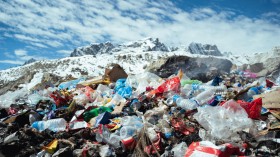You may look fancy flaunting your new Prada bag, but did you know that this highly coveted luxury item has a brutal past? A PETA investigation has revealed the dark secret behind South Africa's luxury bag industry, showing how juvenile ostriches are sacrificed in the process.
In a blog post from People for the Ethical Treatment of Animals (PETA), investigators from the animal rights group went on an undercover mission to South Africa. The result: a never-before-seen footage inside the ostrich farms that cater to high-end luxury bags for Hermès, Prada, Louis Vuitton and other European fashion companies.
West Cape in South Africa houses the biggest ostrich farms and slaughter houses in the region. From feather dusters, boas and other accessories, these companies butcher every part of an ostrich to utilize it for consumer use. Some of the animals' feathers are even plucked out while they are still alive, and are then used for costumes in Moulin Rouge or Mardi Gras.
"They would never tell you where their bags' skin come from...But we are the one who supply for the best luxury groups, yeah. LVMH, Hermès," says an anonymous interview from Klein Karoo, a slaughterhouse in the area. "They don't want us to tell but Hermès, yes for sure. For the Birkin in ostrich, it's always Klein Karoo."
The video shows dead ostriches dangling upside down covered in blood while a farm worker explains that the animal's most lucrative part is the skin on its back.
"This is where the money is made...this goes into a handbag or pair of shoes or whatever," says the worker in the video.
Meanwhile, the skin of three-year-old baby ostriches are turned into wallets, belts, etc. PETA notes that these chicks normally stay with their mother for three years. However, in production farms, they would never even get a chance to meet their parents.
"Smart, sensitive and curious young ostriches are treated like victims in a horror film simply because someone wants a bumpy Birkin bag or a pockmarked Prada purse," said PETA Managing Director Ingrid Newkirk.
© 2024 NatureWorldNews.com All rights reserved. Do not reproduce without permission.





